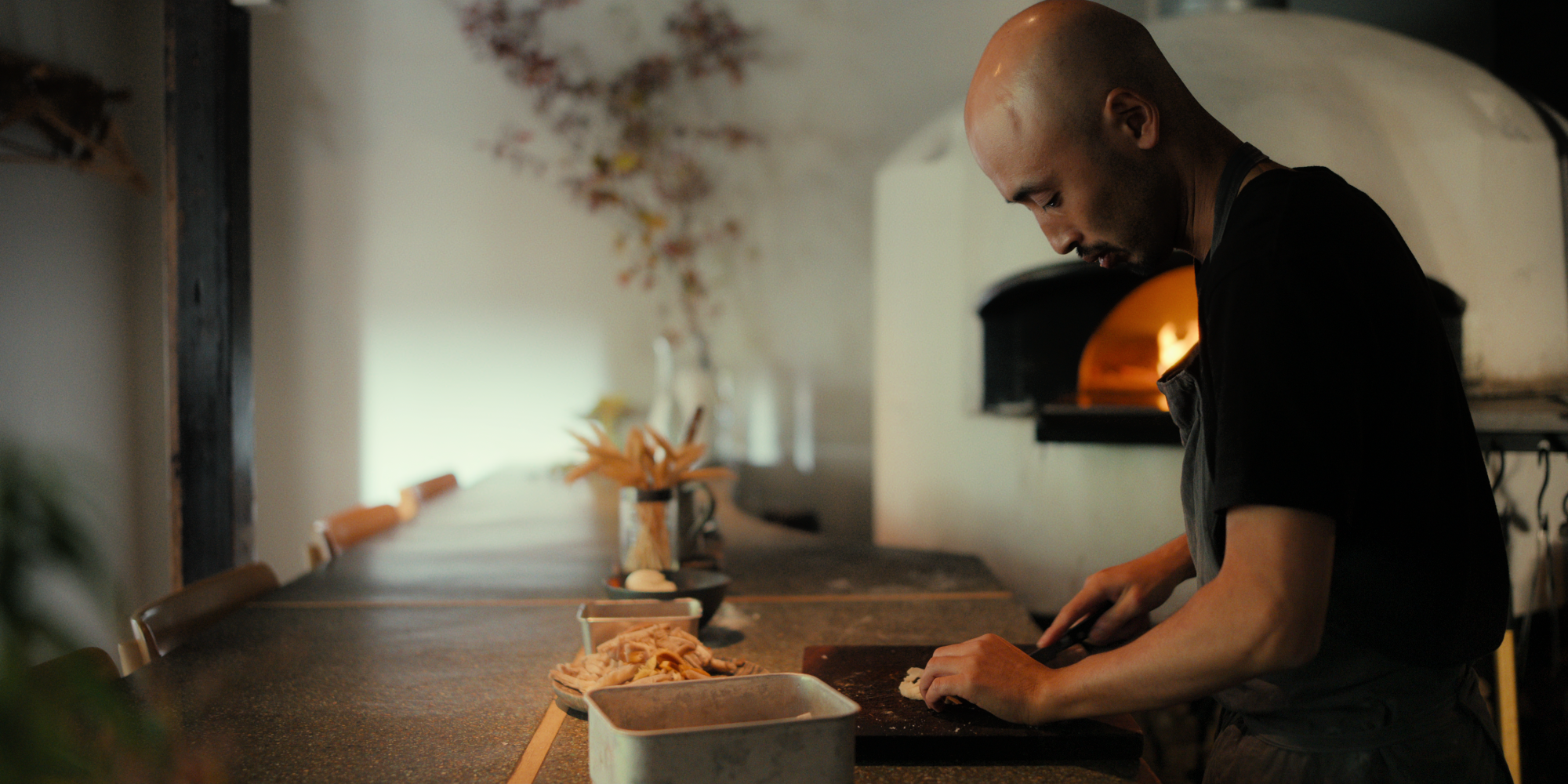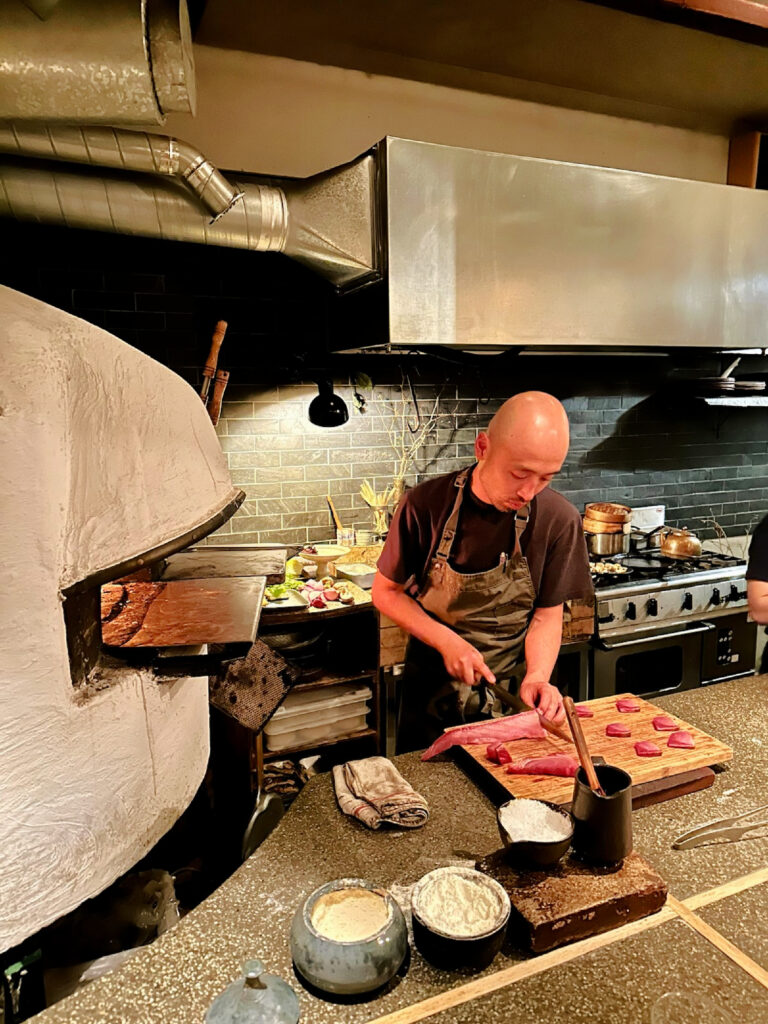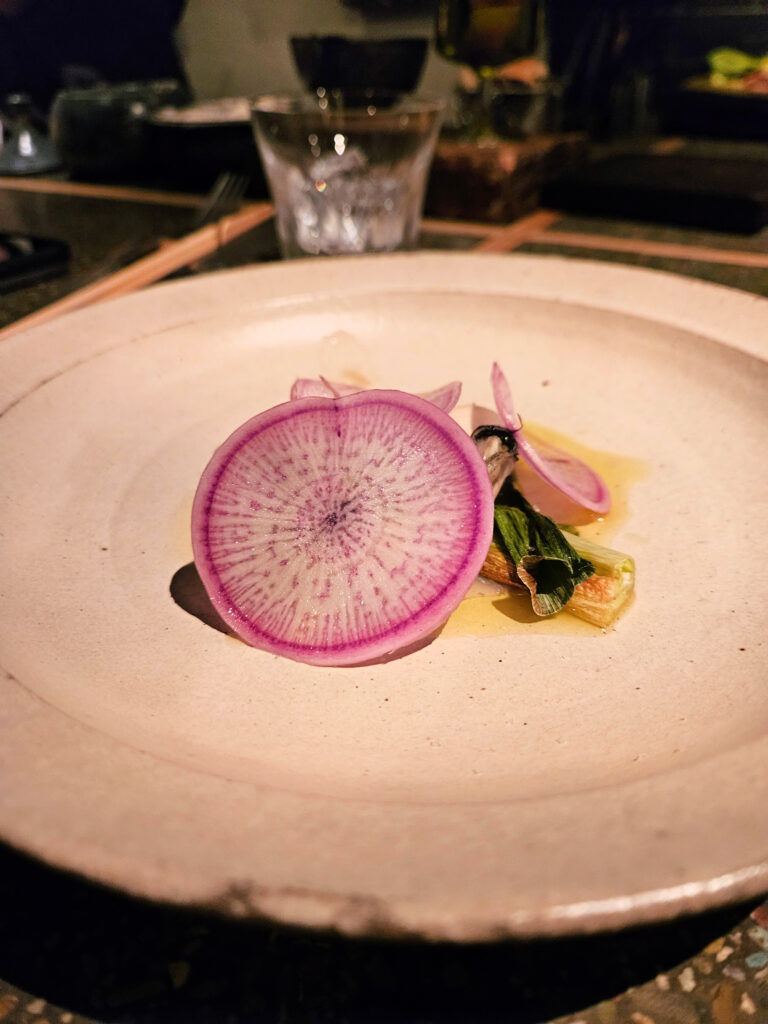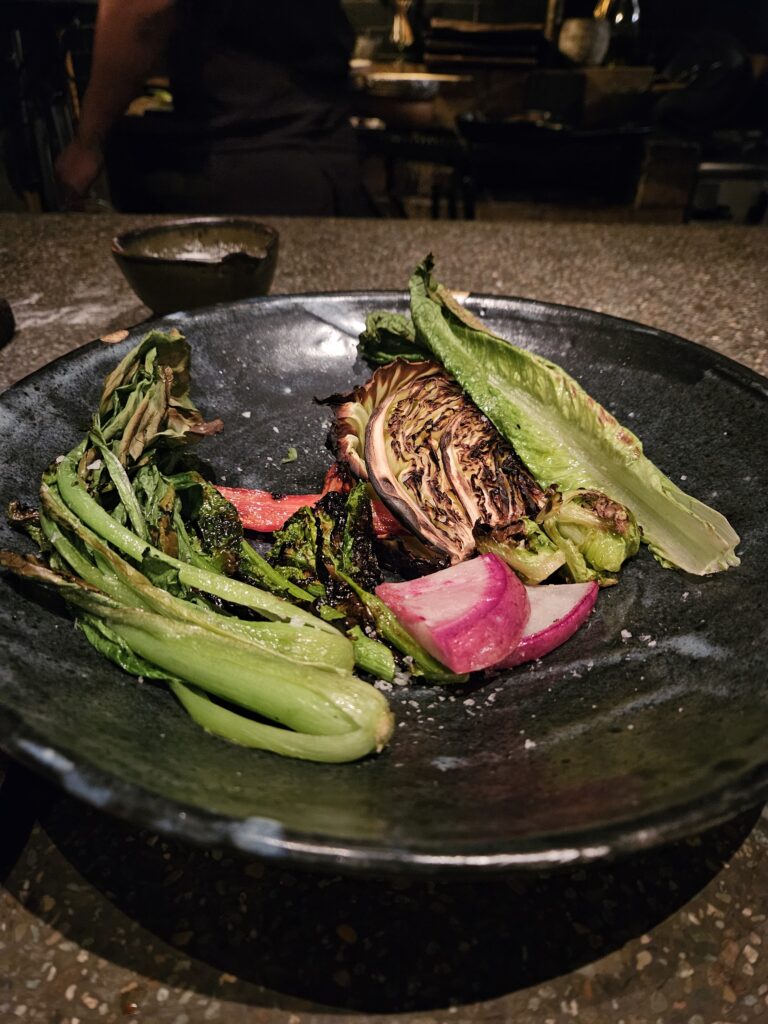Yoshihiro Imai’s story isn’t necessarily a queer one, but the Japanese chef has certainly dealt with some of the same struggles with identity, self-love and acceptance that resonate with members of the LGBTQ+ community. Thanks to Netflix, his confidence in the kitchen has fired up a new fanbase eager to taste his take on the perfect pizza.
Words and Images by Marc Graser, and courtesy of Netflix
As I watch Chef Imai slide freshly made pizza dough spread with a thick paste of salty black nori into a blazing wood-fired stone oven, I realize that those observing him in the open kitchen around me are there for the same reason: we watched Chef’s Table: Pizza.
Literally everyone in the small 14-seat restaurant at that moment traveled to Kyoto because they know his story. The couple next to my husband and I are from Canada. The family behind us is from Minnesota. No one is from Japan.
And it’s mostly been like that since Chef Imai’s episode of Chef’s Table aired in 2022, with my husband having returned to Monk multiple times and experiencing the same thing.
Monk was already doing well before the series. The restaurant was full every night, attracting around 4,000 guests per year from word of mouth. But Netflix has clearly changed who is booking a reservation now. When you watch Chef Imai’s episode, the guests are primarily Japanese. Now, they’re mostly a mix of curious foreigners.
Set-jetting is when fans of a film or show will travel to a place they saw on screen to experience it in person. White Lotus, Game of Thrones, Bridgerton, Downton Abbey, Crazy Rich Asians, the Mission: Impossible and James Bond franchises—all have boosted travel to their filming locations. And that’s not likely to change. Movies or TV shows inspire where 70% of Gen Z and Millennials visit, according to a 2023 American Express Global Travel Trends Report.
Literally everyone in the small 14-seat restaurant at that moment traveled to Kyoto because they know his story.
I essentially did that with Chef’s Table: Pizza. I wanted to experience Chef Imai’s talents in person—in my case, on my birthday. But I’ve also done that after watching seasons of Bravo’s Top Chef: I wanted to experience the food these talented chefs on TV were making at their own restaurants in real life.
Narratives that leave a profound impression are those that kindle an insatiable desire for further exploration. Knowing the struggles of individuals at the center of it all—whether they’re racing a Formula 1 car, playing a grueling match at the US Open, or cooking signature dishes in a kitchen—makes them far more captivating.
Monk lives up to the hype. Set along the canal of the cherry blossom-lined Philosopher’s Path in Kyoto, the restaurant is found inside an unassuming converted house in a peaceful residential neighborhood, walking distance to the city’s ancient temples. Upstairs, Yoshihiro’s wife runs a studio that offers yoga, pilates and meditation classes.
Watching Yoshihiro Imai cook his seasonally inspired dishes is a pleasure. He is incredibly focused. He’s quiet. Confident. Unpretentious. Humble. His food is simple to a fault.
Watching Yoshihiro Imai cook his seasonally inspired dishes is a pleasure. He is incredibly focused. He’s quiet. Confident. Unpretentious. Humble. His food is simple to a fault. There are no seasonings or sauces on his pizza. Just the local ingredients he and his team found at the market that day: Ayu sweetfish, tender kujo negi leek, colorful chrysanthemum, shiitake, buds of butterbur sprout, wild venison or a simple tomato garnished with wildflowers and paired with the right cheese.
His seven-course tasting menu in the spring let the ingredients shine and included a pairing of carrot and mozzarella, Spanish mackerel with daikon and citrus, Jerusalem artichoke and sorrel, wild boar and beetroot, ending with sweet strawberries and sake.
Cooking with fire is central to the restaurant. A plate of seasonal vegetables simply sprinkled with salt and roasted in the oven is one of his standouts. “Serving simple dishes requires courage,” Chef Imai says.
But he’s always been an outsider. Imai started his career as a chef late at 23. He doesn’t have formal training in the kitchen. He was a loner; instead of playing soccer at school with classmates he would roam alone in the woods. He was always on another path.
“There isn’t much to break down in terms of rules because I have never felt bound to them in any way,” he has said. “Since I started, I was always doing what I wanted. My wish for the future is just to be even more free.”
Time and time again, you’re reminded of Imai’s individuality—of his dual ability to respect tradition while seamlessly adapting to contemporary life. He makes pizza his way. His version of a Japanese kaiseki menu doesn’t start with rice and soup, but a bite of pizza crust topped with olive oil and parmigiano, then a soup, perfectly roasted vegetables and meat course, before finishing with a pizza, the star of the show.
Since I started, I was always doing what I wanted. My wish for the future is just to be even more free.
— Chef Yoshihiro Imai, owner of Monk
In Japanese society the older son is expected to continue in the family business. For the Imai family that meant dentistry. Breaking that can be seen as selfish.
“A restaurant is where you get food, not to serve food,” is what his mother once told him. But Imai wasn’t crazy as he pursued his passion. He would eventually win over his parents’ acceptance for not following in the footsteps of the rest of the men in his family.
“At times I thought to myself, it seems like a different person,” his mother would say after watching him cook. He was. That’s what authenticity and being true to oneself looks like.
Chef Imai says he was inspired to become a chef when he was moved by the memory and emotion of the flavors of the pizza he had at Enboca, a restaurant in the mountain town of Nagano. “I can recall that moment so clearly because I wanted to make a dish like that that can connect so deeply with someone and really blow their mind,” he said. It’s an honorable mission.
I reached out to Chef Imai and let him know I would be writing about him. In his response, he appreciated that I had visited, and was pleased about my positive experience. However, he shared his newfound fame from Netflix and increased recognition on the world stage had made him tired. Shortly after, the restaurant took a month-long break.
I hope he was able to rest. Thanks to Netflix sharing his story, he’ll have plenty of more diners ready to try his exceptional pizza in Kyoto—and ready to be inspired.
Follow Yoshihiro Imai and Monk on Instagram.





